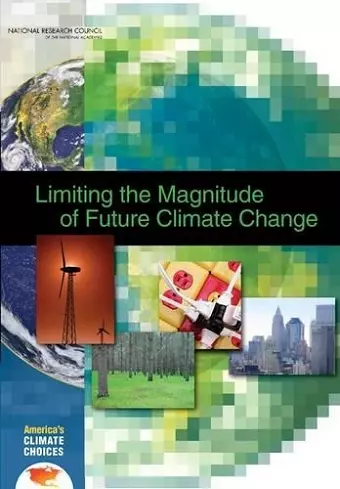Limiting the Magnitude of Future Climate Change
National Research Council author Division on Earth and Life Studies author Board on Atmospheric Sciences and Climate author America's Climate Choices: Panel on Limiting the Magnitude of Climate Change author
Format:Paperback
Publisher:National Academies Press
Published:6th Jan '11
Currently unavailable, and unfortunately no date known when it will be back

Climate change, driven by the increasing concentration of greenhouse gases in the atmosphere, poses serious, wide-ranging threats to human societies and natural ecosystems around the world. The largest overall source of greenhouse gas emissions is the burning of fossil fuels. The global atmospheric concentration of carbon dioxide, the dominant greenhouse gas of concern, is increasing by roughly two parts per million per year, and the United States is currently the second-largest contributor to global emissions behind China.
Limiting the Magnitude of Future Climate Change, part of the congressionally requested America's Climate Choices suite of studies, focuses on the role of the United States in the global effort to reduce greenhouse gas emissions. The book concludes that in order to ensure that all levels of government, the private sector, and millions of households and individuals are contributing to shared national goals, the United States should establish a "budget" that sets a limit on total domestic greenhouse emissions from 2010-2050. Meeting such a budget would require a major departure from business as usual in the way the nation produces and uses energy-and that the nation act now to aggressively deploy all available energy efficiencies and less carbon-intensive technologies and to develop new ones.
With no financial incentives or regulatory pressure, the nation will continue to rely upon and "lock in" carbon-intensive technologies and systems unless a carbon pricing system is established-either cap-and-trade, a system of taxing emissions, or a combination of the two. Complementary policies are also needed to accelerate progress in key areas: developing more efficient, less carbon-intense energy sources in electricity and transportation; advancing full-scale development of new-generation nuclear power, carbon capture, and storage systems; and amending emissions-intensive energy infrastructure. Research and development of new technologies that could help reduce emissions more cost effectively than current options is also strongly recommended.
- Front Matter
- Summary
- 1 Introduction
- 2 Goals for Limiting Future Climate Change
- 3 Opportunities for Limiting Future Climate Change
- 4 Crafting a Portfolio of Climate Change Limiting Policies
- 5 Fostering Technological Innovations
- 6 Interaction with Other Major Policy Concerns
- 7 Multilevel Response Strategies
- 8 Policy Durability and Adaptability
- References
- Appendix A: America's Climate Choices: Membership Lists
- Appendix B: Panel on Limiting the Magnitude of Future Climate Change: Statement of Task
- Appendix C: Panel on Limiting the Magnitude of Future Climate Change: Biographical Sketches
- Appendix...
ISBN: 9780309145978
Dimensions: unknown
Weight: unknown
276 pages